Farm walk at the farm of Josef Pfeffer

5.9.2025, 14 bis 17 Uhr:
Promoting biodiversity on arable land
On Josef Pfeffer's farm, Kleinzell 3, 3240 Mank
Josef Pfeffer runs a family farm in the Melk district with 25 hectares of arable land and 1 hectare of grassland, where he breeds and fattens pigs. Careful handling of the soil is crucial for him: he completely avoids tillage. During the farm tour, Josef Pfeffer showed the participants how he promotes biodiversity on his land. Using spade tests, we took a look at soil life and took a close look at three locations in the field. Josef Pfeffer also showed us the direct seed drilling machine and explained how it works. Together with the participants, we discussed measures to promote biodiversity in arable farming. The international project FarmBioNet, which was presented at the end, is also dedicated to this question. A light snack was served at the end of the tour.
For further reading
No Soil Movement for 5 Years
Around 30 farmers accepted the invitation to a farm tour with Josef Pfeffer. Johanna Frangez began by introducing the Farming for Nature project, followed by a brief slide presentation. After the introductory remarks, the entire group went outside to the fields. The first stop was an adjacent soybean field. Framed by a biodiversity area, the soybean field extends over a gentle slope. Like all of his fields, it is cultivated without any soil disturbance. Josef Pfeffer uses a direct drill for sowing, which only lightly scratches the soil, places the seeds in, and immediately closes the seeding slot. Josef Pfeffer also takes meticulous care to avoid compacting his soils. "The maximum pressure on my soil per square meter is the pressure exerted by an adult man," he explained vividly to the participants. He achieves this with a tire inflation system mounted on his tractor and seed drills. This allows him to deflate the tires from the tractor. "The tractor tire then becomes as wide as a table, and the weight of the machinery is distributed over a large area. This way, I don't have soil compaction," says Pfeffer. Using a spade test, Josef shows the participants what healthy soil looks like: "It has to hold together well and not crumble easily. You can also see many earthworm burrows, which aerate the soil and, above all, help with soil irrigation. Rainwater seeps through the earthworms' vertical burrows and thus does not cause surface erosion. Healthy soil must also smell good—like forest soil." On the soil surface between the still vibrant green soybean plants lies rotting straw—the residue of the cover crop that grew in the field before.
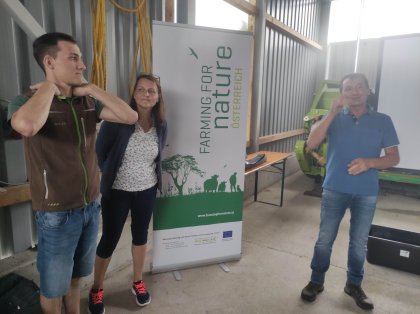
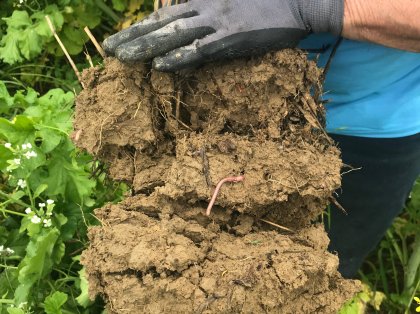
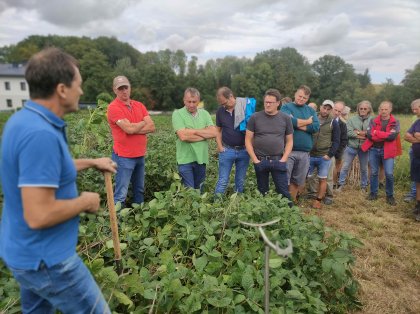
Always keep the ground covered
Cover crops or cover crops are another key component of Josef Pfeffer's farming principles. He ensures that the soil is always covered, preferably with living plants. At the next stop on the farm tour, the participants were able to inspect a grassy area. The cover crop mix was planted directly after the wheat harvest at the end of July. After the first frost, Josef Pfeffer will plant a winter-hardy cover crop mix there, which will then grow in the field until the beginning of May. This way, the soil is always protected from erosion, soil life has food, and the cover crop also serves as a habitat above ground.
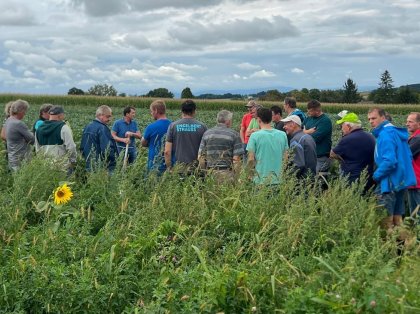
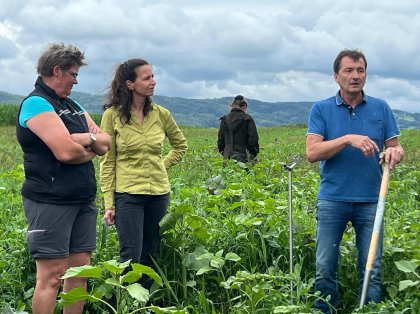
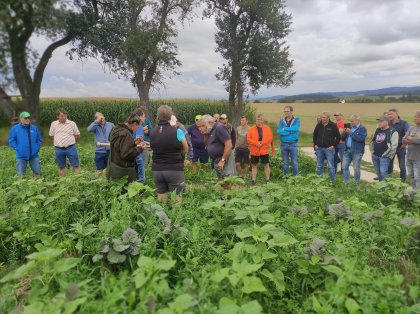
Adjust tire pressure
The third stop on the walk was a cornfield, which Josef Pfeffer planted as a second main crop after harvesting the winter barley in early July. The corn can then be harvested as fodder corn. The effectiveness of the tire inflation system is also impressively demonstrated here. "Here, when sowing, I deliberately only let the air out of the tires once I was already in the field. And you can clearly see that the corn is much lower in the first 15 meters. That's the effect of soil compaction." In this field, too, there is still old straw between the corn saplings from the grass cover that had previously grown there.
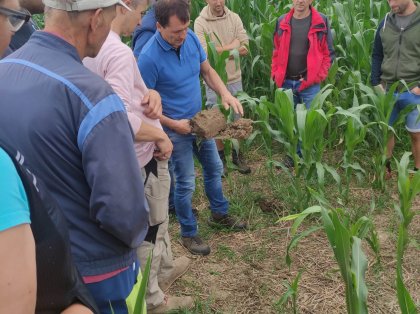
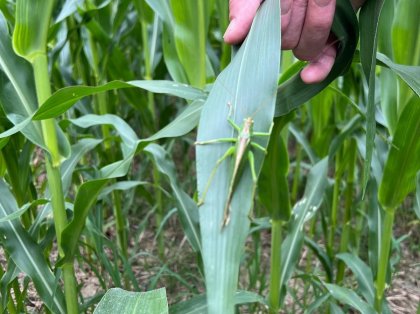
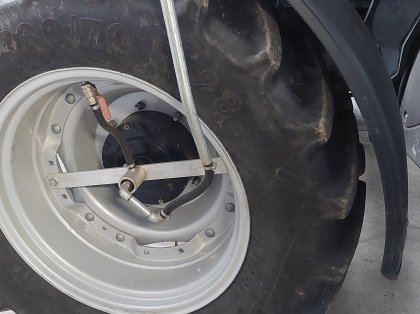
Special seed drill
At the last stop, Josef Pfeffer shows the participants the direct seeder and explains how it works. Fertilizers and pesticides can be applied at the same time as the seeds. Josef Pfeffer speaks openly about their use: "I couldn't practice my farming method without herbicides, but I've reduced their use by 50%. I no longer use insecticides at all, and I've been able to reduce my use of fungicides by 70%." An important topic that runs through the afternoon is soil erosion protection. The loss of fertile agricultural soils has destroyed entire civilizations and empires in the past; a prominent example is the Roman Empire. But soil erosion caused by wind and water is also a major problem in present-day Austria. Josef Pfeffer sees his farming method as an opportunity to regenerate the soil.
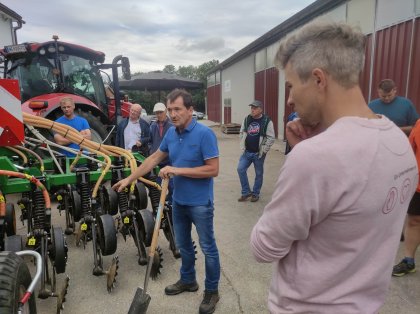
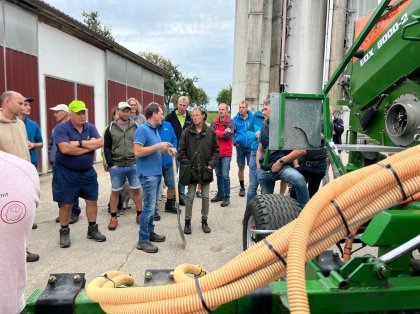
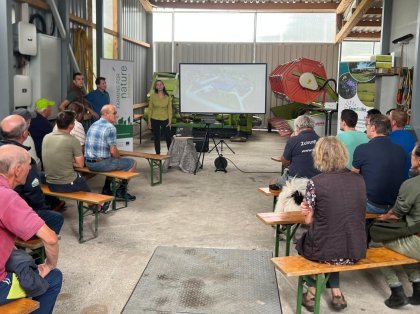
Biodiversity in the field in the FarmBioNet project
Finally, Johanna Frangez presented the FarmBioNet project and invited all participants to participate in the network for agriculture and biodiversity. In the ensuing discussion, the participants' experiences with biodiversity measures in the field were discussed. For example, several suggestions for improvement regarding field flower strips were put forward: There should be no maintenance obligation for such biodiversity areas in the field. From an ecological perspective, it would often make sense to leave these areas undisturbed for several years, but this is not possible under the current CAP regulations. The use of site-adapted seeds with many perennial partners is important. The regional distribution of such fallow strips was also discussed. It was suggested that, for example, through the hunting community, a sensible regional distribution of the strips should be sought in order to connect biodiversity areas as effectively as possible within the landscape.
To round off the event, Martina Pfeffer served homemade bread with delicious homemade herbal spreads and herbal syrup.